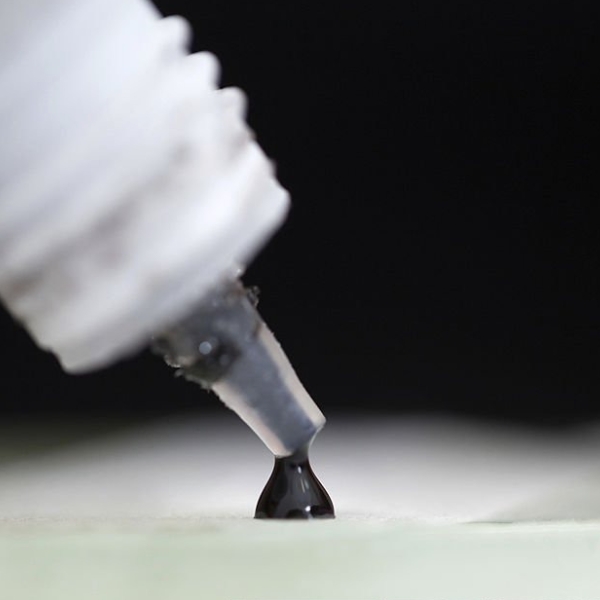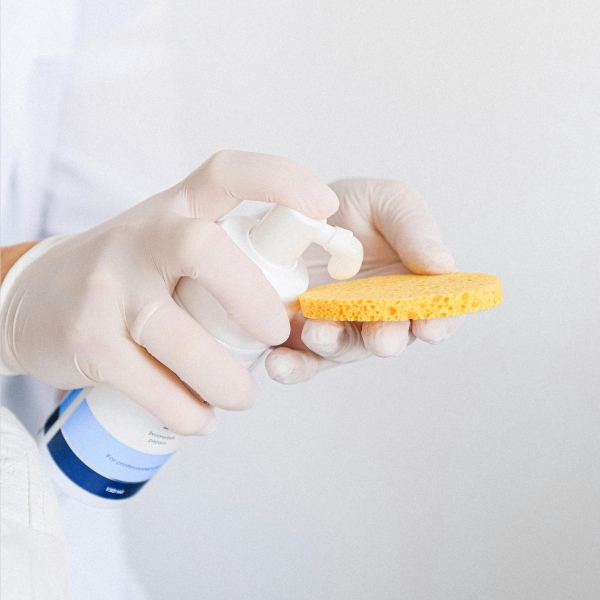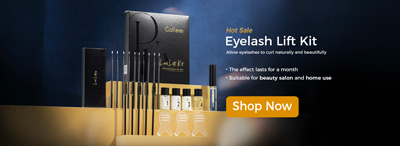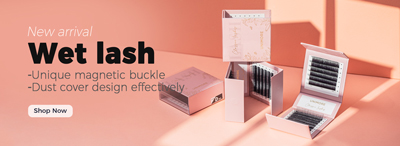As a lash technician, choosing the right eyelash extension glue is crucial to ensure a successful application. However, many technicians struggle with finding the right glue for their needs or using it effectively. In this article, we will explore the different types of eyelash extension glue available, provide tips for choosing the right one for your specific needs, and discuss the importance of preparing your lashes and eyes before application. We will also cover different techniques for applying the glue, common mistakes to avoid, and ways to extend the life of your glue.
- 1 1. Choosing the Right Glue
- 2 2. Cyanoacrylate Glue: A Popular Choice
- 3 3. Latex Glue: A Growing Concern
- 4 4. Solvent-Based Glue: A Less Common Option
- 5 5. Factors to Consider When Choosing the Right Glue
- 6 6. Preparing Your Lashes and Eyes
- 7 7. Applying the false eyelash glue
- 8 8. Tips for Making Your Glue Work Better
- 9 Conclusion
- 10 Additional Tips:
1. Choosing the Right Glue
When it comes to selecting the right professional eyelash glue, there are three main types to consider: cyanoacrylate, latex, and solvent-based. Each type has its own unique characteristics, advantages, and disadvantages, making it essential to choose the right one for many lash technicians.
2. Cyanoacrylate Glue: A Popular Choice
Cyanoacrylate glue is a popular choice among lash technicians due to its fast-drying properties and strong bonding ability. This type of glue is known for its quick drying time, which allows for a fast and efficient application process. It is also highly effective in bonding with most lash materials, making it a popular choice for many lash technicians.

However, it's important to note that cyanoacrylate glue can be prone to drying out quickly, which can lead to a weak bond if not applied correctly. This means that lash technicians must be careful when applying the glue, ensuring that it is applied in small amounts and evenly distributed across the lash strip.
Despite these limitations, cyanoacrylate glue remains a popular choice among lash technicians due to its ease of use and effective bonding properties. It is also relatively inexpensive compared to other types of glue, making it a cost-effective option for many lash technicians.
3. Latex Glue: A Growing Concern
Latex is a natural rubber material used in various products, including eyelash extension glue. While latex can add flexibility to the glue, it also poses a risk of causing allergic reactions. However, latex glue may not be as strong as other types of glue and can be more prone to lifting. Latex allergies are relatively common, and if your clients have a known latex allergy, it is essential to seek latex-free alternatives to avoid adverse reactions. In fact, Gollee waterproof eyelash glue opts for latex-free formulas to prioritize client safety.
① Risks of Using Latex Glue
In addition to the risk of allergic reactions, latex glue may also be less effective than other types of glue. Latex glue may not provide a strong bond between the lash and the glue, which can lead to lifting and separation over time. This can result in poor adhesion and a less natural-looking lash application.
② Alternatives to Latex Glue
If you are concerned about the risks associated with latex glue, there are several alternatives available. Cyanoacrylate glue, for example, is a popular choice among lash technicians due to its fast-drying properties and strong bonding ability.
③ Precautions When Using Latex Glue
If you do choose to use latex glue, there are several precautions you can take to minimize the risk of allergic reactions and ensure a strong bond:
Perform a patch test on the client's skin before applying the glue to ensure that they are not allergic.
Follow proper application techniques and use the correct amount of glue.
Avoid applying the glue too close to the eye or using excessive pressure.
Use a bonding agent or primer to help improve the bond between the adhesive and the lash material.
4. Solvent-Based Glue: A Less Common Option
Solvent-based glue is a less common option in the world of eyelash extensions, but it can be a valuable addition to your toolkit. This type of glue is often used in combination with other types of glue, such as cyanoacrylate or latex, to provide a strong and durable bond.
5. Factors to Consider When Choosing the Right Glue
Type of lashes: If you are working with thick lashes, solvent-based glue may be a better option. If you are working with sensitive lashes, Cyanoacrylate glue may be a better choice.
Sensitivity of clients' eyes: If you are working with clients who have sensitive eyes, Cyanoacrylate glue may be a better option.
Level of durability: If you need a strong, long-lasting bond, cyanoacrylate glue may be a better option.
Application technique: If you are new to applying eyelash extensions, you may want to start with a simpler adhesive like cyanoacrylate or latex glue.
By considering these factors and understanding the pros and cons of each type of glue, you can make an informed decision.
When choosing the right glue for your specific needs, consider the following factors:
6. Preparing Your Lashes and Eyes
Step 1: Choose the Right Eyelash Cleanser
When selecting a cleanser for your customer's lashes and eyes, look for a product that is specifically designed for eyelash extensions. Avoid using harsh chemicals or exfoliants that can dry out your lashes or irritate your eyes. Instead, opt for a gentle cleanser that is fragrance-free and hypoallergenic. This type of cleanser will help to clean lashes without causing any irritation or damage.
Step 2: Clean Lashes
To clean lashes, apply a small amount of cleanser to a cotton swab or lint-free wipe. Gently sweep the swab or wipe across lashes, starting from the base of the lash line and working your way outward. Be careful not to pull or tug on your client's lashes, as this can cause them to become damaged. Additionally, avoid using hot water or harsh chemicals, as these can strip lashes of their natural oils and cause irritation.

Step 3: Remove Excess Moisture
Once you have cleaned customers' lashes, use a lint-free wipe to remove any excess moisture. This will help to ensure that the glue adheres properly and provides a strong bond. Gently wipe away any excess moisture from your lashes and eyes, taking care not to touch the lash line or apply too much pressure.
Step 4: Inspect Lashes
After cleaning and removing excess moisture, inspect lashes to ensure that they are free of any debris or residue. If you notice any remaining dirt or oil, repeat the cleaning process as needed.
By following these tips and techniques, you can help ensure that your eyelash extension glue works better and lasts longer.
7. Applying the false eyelash glue
Once you have prepared lashes and eyes, it's time to apply the glue. There are several different techniques for applying eyelash extension glue, including dotting, painting, and flicking.
Dotting involves applying small dots of glue to the base of the lash strip. This technique is best used for thicker lashes or when working with sensitive eyes.
Painting involves applying a thin layer of glue to the base of the lash strip. This technique is best used for thinner lashes or when working with more delicate lashes.
Flicking involves applying small amounts of glue to the base of the lash strip in quick succession. This technique is best used for thicker lashes or when working with multiple lash strips.
Regardless of the technique you choose, it's essential to apply the glue smoothly and evenly. Use a brush or applicator to apply the glue in small sections, starting at the center of the lash strip and working your way outward.
8. Tips for Making Your Glue Work Better
When applying eyelash extension glue, there are several common mistakes that people make that can affect the quality of the bond. Here are some tips for avoiding these mistakes and making your glue work better:
Use a timer to ensure that you don't apply too much glue.
Clean your lashes before applying the glue.
Avoid using harsh chemicals or exfoliants on your lashes.
Use a lint-free wipe to remove any excess moisture.
Apply the glue smoothly and evenly.
Use an eyelash super bonding agent or primer to help improve the bond between the adhesive and the lash material.
By following these tips, you can help ensure that your eyelash extension glue works better and lasts longer.
Conclusion
In conclusion, choosing the right eyelash extension glue can be a daunting task, but by following these tips and techniques, you can help ensure that your glue works better and lasts longer. Remember to choose high-quality glue that is suitable for your specific needs, prepare your lashes and eyes properly before application, use proper application techniques, avoid common mistakes, and take steps to extend the life of your glue. By following these tips, you can help provide high-quality eyelash extensions that will last long after they are applied.
Additional Tips:
Always read the instructions carefully before using new eyelash extension products.
Keep your eyelashes clean and moisturized by using a gentle cleanser and moisturizer.
Avoid using heat styling tools near your eyelashes as they can damage them.
Consider getting regular fill-ins or touch-ups to maintain healthy-looking lashes.
By following these tips and techniques, you can help ensure that your eyelash extensions look great and last long. Remember to always prioritize proper care and maintenance of your lashes to get the best results.







